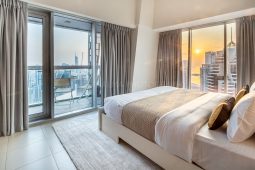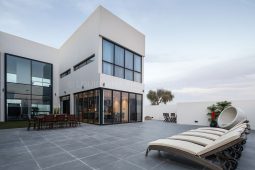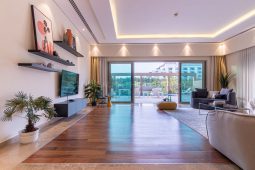A garden office is a pretty dreamy setup for anyone who works from home. For one, you’re away from the house – and you’re surrounded by nature. Plus, you get to enjoy a mini commute that helps to keep work and home life separate. So it comes as no surprise that the garden office or ‘shoffice’ was found to be one of the most valued garden features for homebuyers in 2022.
From trendy pods to repurposed summerhouses and revamped garden room ideas, there are loads of ways to extend our living spaces beyond our four walls. Our garden office ideas offer the advantage of providing a quiet pocket away from the main hubbub of your main home.
Garden office ideas to inspire
While working from home has plenty of pros, the daily leisurewear wardrobe and extra time in bed being just two, it also can prove hard to stay motivated to work when in your own environment. Our homes are the space we create to relax and retreat from the busy outside world. So that doesn’t bode well with turning them into a home office.
That’s where having a garden office to escape to can be a very happy resolve. With home working set to stay, maybe it’s time to venture out into the garden – for pastures new!
1. Plan ahead

Image credit: Future Publishing Ltd / Polly Eltes
Before we get to the fun stuff, it’s worth taking a moment to think about who will be using the garden office. How many people does it need to accommodate at once and does it need to perform multiple functions? What kind of budget do you have and do you want to kit it out with heating and plumbing or stick with something more basic?
2. Make it feel like it’s always been there with planting

Image credit: Future Publishing Ltd / Holly Jolliffe
‘Consider the path you will use to reach it; borders, trees, and grass may all be impacted,’ says garden designer Susan Hampton. ‘If you work out how these are going to be changed you can soon make your new building looks as if it really belongs rather than being a hasty decision.’
Susan says that even a brief consultation with a garden designer can help you get these decisions right so that you can carry them out in your own time. Incorporating a garden office into your space doesn’t have to be expensive either. It is quite likely you will have things in the garden that can be lifted and replanted to save money and add maturity to the scheme, Susan comments.
3. Go for an indoor/outdoor design

Image credit: Cuckooland
The main draw of a garden office is feeling like you’re working outside, without battling wind, drizzle or bright sunlight. Consider a garden room design like this example from Cuckooland which blends seamlessly into the garden, or something with lots of windows from floor to ceiling.
Decorate with lots of houseplants to blur the boundary between the inside and outside of your garden office and reap the benefits of a workspace that feels at one with nature.
4. Think about viewpoints

Image credit: Future Publishing Ltd / Colin Poole
‘Adding a room in your garden is going to make a big difference to your life by giving you some extra space,’ says Susan Hampton. ‘But it is also going to have a big impact on your garden.
‘Make sure it is a good impact by thinking through how you position the new building – think about the view you have from the house to the garden room, and the view you have when you are inside that new room.’
5. Keep it simple
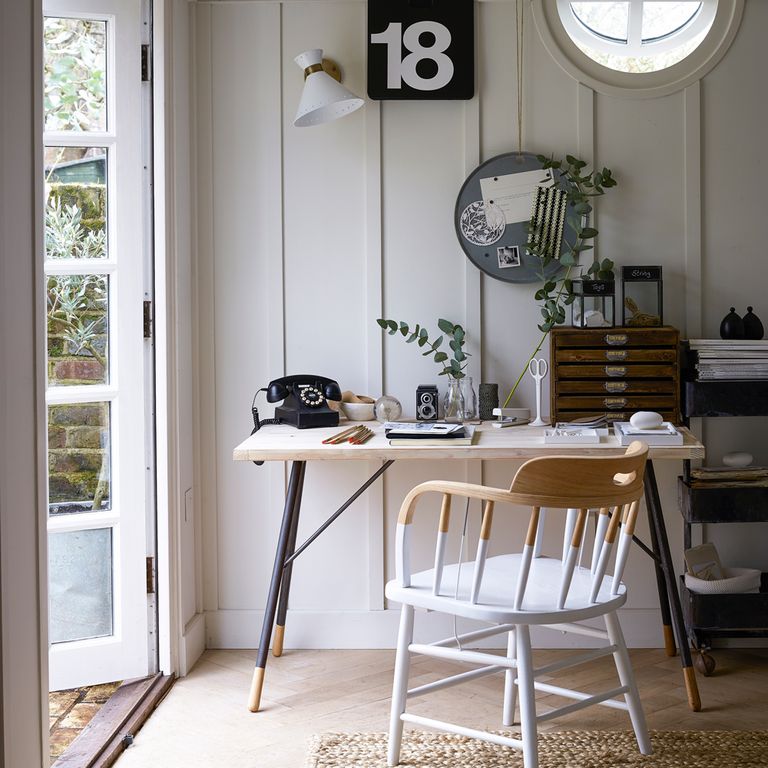
Image credit: Dan Duchars
If you already have a summerhouse, turning it into a home office will be a natural transition. Keep the colour palette muted and make the furniture versatile so that it can still function otherwise as a relaxing summerhouse when work hours are over. Flexibility is key to making the space work for your needs.
If you’re revamping an old shed, make sure it’s structurally sound. Outdoor building company Lidget Compton says to make sure the building hasn’t succumbed to any damages over winter. Check that the doors and windows, if it has them, are sealed correctly. This will prevent any work equipment from getting damaged in bad weather.
6. Repurpose a side return

Image credit: Green Retreats
Use the main space of your garden to build a garden room for your now-permanent home office. Garden offices became the hero garden room during the pandemic.
‘With most of the country encouraged to work from home, making space to focus on work and create a work-life balance seemed an impossible task’ say Green Retreats. ‘A garden room offered a solution to both! Creating space away from the distractions of home, as well as being able to close the door at the end of the day to properly switch off.’
‘I think a garden room is a really great place to go and work, particularly if you can just get that sense that you leave the house, even if it’s four steps,’ says TV presenter and property expert Sarah Beeny. ‘It’s really good for your mind to separate your work and your home.’
7. Enliven the space with thoughtful decor

Image credit: Lizzie Orme
Take your home office outside but retain the same level of decor as that within your home. Paint an on-trend black feature wall and hang decorative accessories to dress the space as if it was inside your home. The sense of familiarity and the common thread between your garden ideas and your interiors will prove comforting.
Create an office ‘break-out space’ with jute floor cushions and informal seating, to escape the screen and enjoy a garden break with a book during your lunch break.
8. Paint the walls to boost creativity

Image credit: Jon Day
A home office needs to be an environment that provides a balance of both calm and motivation, so the colour you choose to paint the walls needs to be a careful consideration. Green is the colour we associate most with the greenery from nature, so it can be quite motivational. At the same time, because being at one with nature soothes the soul, it’s the ideal colour for creating a serene space in which to work.
9. Hang curtains to prevent glare on screens

Image credit: Tim Young
Wherever you decide to set up your garden office, glare on a computer screen is inevitable. There are a number of ways to minimise the brightness to save yourself squinting at your screen – the most obvious for a repurposed summer house idea is to hang a lightweight curtain, to pull across when needed. Practical and pretty to dress the space.
A spokesperson from Chiltern Garden Buildings also suggests, ‘A screen hood for your laptop will help you to see your screen, even during the middle of the day and it will also help to keep your laptop cool and shaded. You could even look at covering your screen with an anti-glare filter which will help eradicate the mirror-like reflections from your surroundings.’
10. Opt for privacy with a screen

Image credit: Tim Young
Save being distracted from the tasks at hand by screening off one area for when you need to concentrate. This might be more necessary if you’re not the only one who wants to hang out outside and enjoy the garden during working hours. Adding decorative screens or planters is a great way to add privacy and separate workplaces to ensure a successful day’s work, without interruption.
11. Put a garden pod in place

Pods for the garden come in many forms, from outdoor office to guest bedroom, hobby room to teenage hangout. Pods for the garden tend not to require planning permission or foundations, which makes them quick to buy and speedy to install.
Award-winning design and architectural practice JaK Studio have created modular cabins to install in your garden to offer the ideal space for a home office solution. The Module Cubed (HOM3) designs are inspired by the popular online game Minecraft. The completely customisable modular garden rooms are ideal for contemporary home working.
12. Stay connected
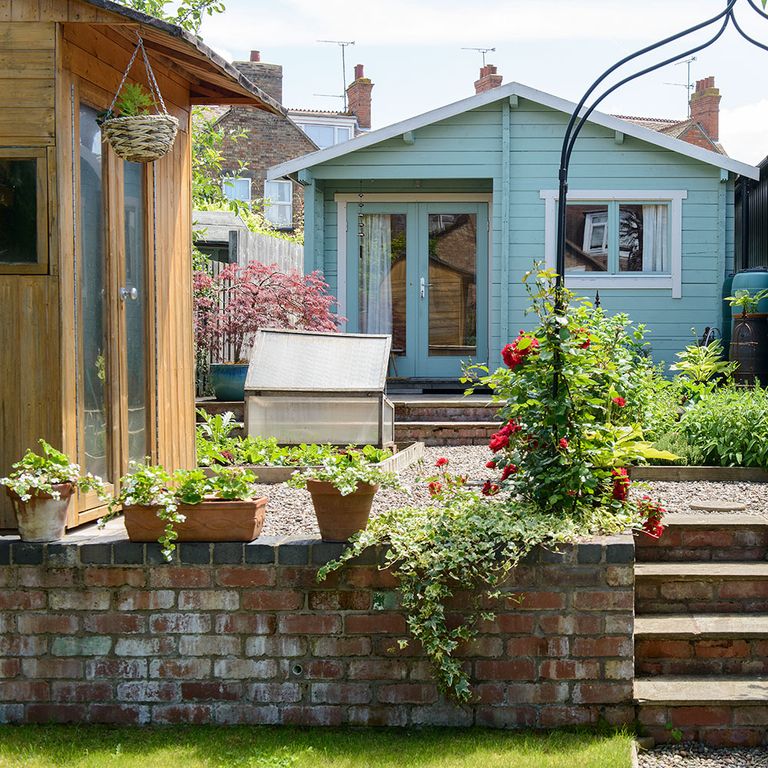
Image credit: Colin Poole
One of the key things you need to consider when setting up a working spot outside is a location that is close enough to the Wi-Fi. This will determine where best to place your garden office set up.
‘Moving your office outside could mean your home connection becomes interrupted and sporadic, which will cause more headache and stress when joining any virtual meetings, conferences or when making any important calls If you can, move the router closer to your chosen spot so your signal strength is the best it can be’ advises a spokesperson for Chiltern Garden Buildings. ‘If you’re unable to move your router, a Wi-Fi extender will help strengthen your connection.’
13. Repurpose the garden furniture

Image credit: Dan Duchars
If you’re already saving money by repurposing a garden shed you may want to keep costs in check with a few other savvy solutions. Repurposing the outdoor furniture is a sure-fire way to save on spending.
‘Although working from the hammock may sound cozy, if you’re going to be working outside for a long stretch, your best bet is to set up shop at a traditional outdoor dining table’ says Riverbend Home’s Chief Home Officer Mark Feldman. ‘If you want a standing desk option outdoors, two alternatives are repurposing a potting bench or a bar height table. Consider the same ergonomics as your traditional desk setup.’ Add cushions to bistro chairs to pad the seat and be sure to take frequent breaks to stretch in between long spells of sitting at a desk.
14. Seek shade

Image credit: Cuprinol
Whether it is 15 degrees or 35 degrees, protecting yourself from the sun when working outside is essential. Especially if you’re used to working indoors, the powerful rays may be a shock to the system. If your garden is a suntrap if you do venture outside to work on a bench, ensure you have the appropriate protection.
A canopy will provide shelter to seek shade, protecting your skin from the UVA and UVB rays and your electrical equipment also. Retreat inside when it’s too hot to handle, the shelter of a garden office in a jazzed-up shed will provide a welcome escape.
15. Welcome warmth with rugs

Image credit: Lizzie Orme
Use rugs to layer the floors to make the space feel more inviting. The homely touch will add a certain feeling of warmth but by blocking any potential draughts from coming through the floorboards it will literally warm the room too.
Do you need planning permission for a garden office?
‘You have to be a little bit careful on garden buildings because you have to make sure that you don’t need planning permission,’ property expert Sarah Beeny warns. ‘And it depends on how big your garden is, how high the building that you’re planning on putting in is, how close the neighbours are. You do need to check with planning permission and building regs. You can’t have a habitable room out there without building regs, so there are a few rules you need to comply with.’
For most cases it’s unlikely you will need planning permission for a garden office, because the structures are often repurposed sheds and summer houses – which are all in the permitted development guidelines. Garden pods tend not to require planning permission or foundations either, which makes them quick to buy and speedy to install.
‘If your building is shorter than 2.5m, doesn’t take up more than 50 per cent of your garden, or isn’t going to be placed in your front garden, you shouldn’t require planning permission’ says Charles Walton.
‘However, this will largely depend on local councils and neighbourhood policies, as well as the response of your immediate neighbours. Planning permission rules can vary by area, so we would strongly recommend checking with your local council.’
Is it worth getting a garden office?
They say that you shouldn’t work a horse in its own paddock, because that’s their own personal space – a chance to just be. Much can be said the same for humans. While there are many benefits to working from home it can sometimes encroach on your work-life balance. Therefore building a garden room you can work in (if you have the space) allows you to physically leave the house for work and return home after each day. Despite the fact you are only walking out the door short distance to the garden, mentally it can be liberating to have the routine.
‘We believe a garden office is whatever you make it, which is why we provide a blank slate for you to decorate however you wish’ says Charles Walton, of BillyOh. ‘A quality garden room can act as a home studio for creatives or productive office space for freelancing professionals. Moving your office space outside your home allows you to separate your work and home life better and approach your work with the attention and professionalism it deserves.’
According to Roofing Megastore, incorporating an office into your garden can actually add an average of £7,261 value to your property. Almost 15% of homeowners surveyed in the research said they would pay up to £15,000 more for a property with a garden office, with a further 7% paying up to £20,000 more.
Can you sleep in a garden office?
A garden office can be adapted for the future when you might want to use it as a teenagers’ hangout or a guest bedroom. You’d need to make sure the condition of the building is at a high enough standard that it’s the kind of space you’d happily spend the night, though. Summerhouses can offer a great multifunctional space to fulfill a variety of functions.
The post Garden office ideas to create a serene workspace outside appeared first on Ideal Home.




































